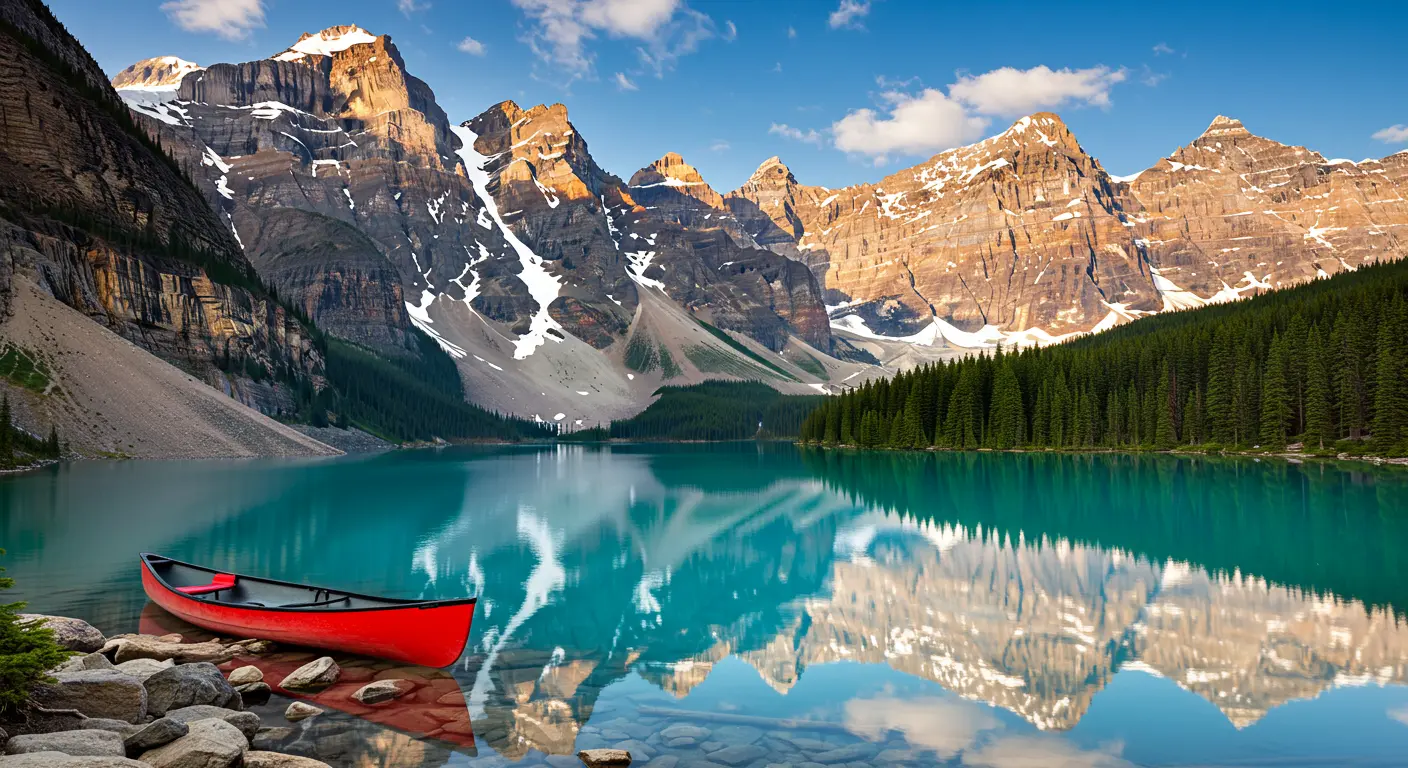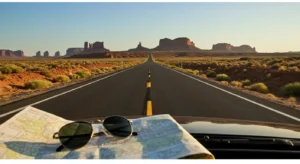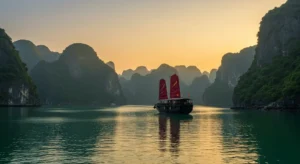Table of Contents
The Ultimate Canada Vacation Planner: Your First Trip North of the Border
So, you’ve decided to plan a Canada vacation. Excellent choice. But then it hits you—this isn’t a small trip. Canada is the second-largest country on Earth, a sprawling mosaic of rugged mountains, cosmopolitan cities, and coastlines that seem to go on forever. Where do you even start?
I remember my first time planning a cross-Canada trip. I stared at a map, utterly overwhelmed by the options. A week in Vancouver? A train ride through the Rockies? A drive along the Cabot Trail? It felt like trying to sip from a firehose.
That’s where this guide comes in. Consider me your friendly travel planner, here to turn that “Where do I start?” panic into genuine excitement. We’re going to break down this magnificent country into a manageable, dream-worthy itinerary. Let’s dive in and craft the perfect Canadian adventure for you.
Why Canada? More Than Just “Nice” People and Maple Syrup
Sure, the stereotypes are true—Canadians are famously polite, and yes, the maple syrup is divine. But a Canada vacation offers a depth of experience that goes far beyond the clichés. It’s about standing in silence before a turquoise glacial lake, hearing the thunder of a waterfall that powers a city, and tasting seafood so fresh it was in the ocean that morning.
From a practical standpoint, it’s also a fantastic destination for beginners. English and French are widely spoken, the infrastructure for travelers is excellent, and it’s known for being a remarkably safe and welcoming country. Whether you’re an outdoor enthusiast, a foodie, or a culture buff, Canada has a corner with your name on it.
First Things First: When to Visit Canada? (Spoiler: It Depends!)
This is the million-dollar question, and the answer isn’t simple. Canada has four very distinct seasons, and the “best” time to visit is entirely dependent on what you want to experience.
Summer (June – August): The Classic Canada Vacation
- The Vibe: This is peak season for a reason. The weather is warm (often hot inland), the days are long, and every festival, hiking trail, and patio is in full swing.
- Ideal For: Road trips, hiking in the national parks, city exploration, and whale watching on the coasts.
- The Catch: This is also the busiest and most expensive time. Popular spots like Banff and Niagara Falls will be crowded, so book accommodations well in advance.
Fall / Autumn (September – October): A Painter’s Palette
- The Vibe: The crowds thin out, the air turns crisp, and the forests of Ontario and Quebec explode in a spectacle of red, orange, and gold. It’s a photographer’s dream.
- Ideal For: Leaf-peeping drives, wine tours in Niagara or the Okanagan Valley, and enjoying cities without the summer hustle.
- The Catch: Weather can be unpredictable, and some outdoor activities in the mountains may start to close for the season.
Winter (November – March): A True Northern Wonderland
- The Vibe: If you embrace the cold, Canada in winter is pure magic. Think world-class skiing, charming Christmas markets, and the surreal dance of the Northern Lights.
- Ideal For: Skiing in Whistler or Banff, experiencing the Quebec Winter Carnival, dog-sledding, and cozying up in a cabin.
- The Catch: It’s cold. Seriously cold in many regions. Daylight hours are short, and travel can be disrupted by snowstorms.
Spring (April – May): The Great Thaw
- The Vibe: This is the “shoulder season.” The snow melts, maple sap runs (a great time for sugar shack visits!), and the country wakes up from winter.
- Ideal For: Budget travelers (prices are lower), seeing powerful waterfalls at their peak flow, and enjoying the first blooms without the crowds.
- The Catch: It can be muddy and slushy. Some attractions may have limited hours as they transition from winter to summer schedules.
Crafting Your Itinerary: A Tour of Canada’s Greatest Hits
Let’s break the country down into manageable chunks. You can’t do it all in one trip (unless you have months!), so it’s about choosing what resonates with you.
The West: Majestic Mountains & Pacific Vibes
This is the Canada you see on postcards—the dramatic Rockies and the laid-back West Coast.
- Vancouver, British Columbia: A stunning city nestled between ocean and mountains. Don’t miss Stanley Park, Granville Island Public Market, and a walk across the Capilano Suspension Bridge. It’s the perfect, easy-to-navigate introduction to the country.
- Vancouver Island: A short ferry ride away. Here you’ll find the charming, very British city of Victoria, but the real magic is in the wild Pacific Rim National Park for storm watching and Tofino for surfing and incredible seafood.
- The Canadian Rockies (Alberta & B.C.): This is the big one. The twin towns of Banff and Lake Louise in Banff National Park are the main hubs. The sight of the turquoise water of Lake Louise against the Victoria Glacier is something you’ll never forget. Just north, Jasper National Park is equally stunning and often feels a bit quieter. The drive between them on the Icefields Parkway is arguably one of the most beautiful in the world.
The Heartland: Urban Energy & Iconic Waterfalls
This region is all about Canada’s vibrant culture and most famous landmarks.
- Toronto, Ontario: Canada’s largest city, is a bustling, multicultural metropolis. Climb the CN Tower, catch a show, explore diverse neighborhoods like Kensington Market, and take a ferry to the Toronto Islands for a skyline view.
- Niagara Falls, Ontario: Yes, it’s touristy. But it’s touristy for a reason—the sheer power and scale of the falls are awe-inspiring. The Journey Behind the Falls and a Hornblower boat cruise are classic, unforgettable experiences.
- Ottawa, Ontario: The nation’s capital is packed with history. Visit Parliament Hill, explore the world-class museums like the Museum of History (just across the river in Gatineau, Quebec), and if you’re there in winter, skate on the Rideau Canal, the world’s largest skating rink.
The East: European Charm & Coastal Beauty
For a taste of Europe in North America, head east.
- Montréal, Quebec: A city that pulses with energy. Wander the cobblestone streets of Old Montréal, climb Mount Royal for the view, and immerse yourself in a food scene that is second to none. The blend of French joie de vivre and North American grit is intoxicating.
- Québec City, Quebec: If Montréal feels European, Québec City will make you swear you’ve been transported to France. The fortified Old Town is a UNESCO World Heritage site and utterly romantic, especially in the winter or fall.
- The Maritimes (Nova Scotia, Prince Edward Island, New Brunswick): For a slower pace, head to Canada’s Atlantic coast. Drive the stunning Cabot Trail in Nova Scotia, visit the Green Gables heritage site on PEI, and witness the highest tides in the world at the Bay of Fundy in New Brunswick. The seafood here—lobster, scallops, oysters—is reason enough to visit.
Practical Tips for a Smooth Canada Vacation
Now for the nitty-gritty. A little planning goes a long way.
- Getting Around: For covering large distances, domestic flights are your best bet. For exploring a specific region like the Rockies or the Maritimes, renting a car is essential. It gives you the freedom to discover hidden gems. Via Rail offers train services, which are scenic but can be slow for cross-country travel.
- Money Matters: The currency is the Canadian Dollar (CAD). Credit and debit cards are widely accepted almost everywhere. It’s always wise to have a little cash for small vendors or farmers’ markets.
- Entry Requirements: Most international visitors will need an Electronic Travel Authorization (eTA) or a visa. For example, citizens of visa-exempt countries (like the US, UK, Australia) need an eTA to fly to Canada. This is a simple online process, but it’s crucial to check the official Government of Canada website for the most current requirements for your nationality.
- Don’t Forget Your Documents: Ensure your passport is valid for the duration of your stay.
Frequently Asked Questions (FAQs)
Q: Do I need a visa for my Canada vacation?
A: It depends on your country of citizenship. Many countries are visa-exempt but require an Electronic Travel Authorization (eTA), which you apply for online. Always check the official Government of Canada immigration website for the most accurate and up-to-date information.
Q: Is Canada an expensive vacation destination?
A: It can be, but it’s manageable with planning. Major cities like Toronto and Vancouver are comparable to other world-class cities in cost. You can save money by traveling in the shoulder seasons (spring/fall), cooking some of your own meals if you have kitchenette accommodations, and prioritizing free activities like hiking and exploring public parks.
Q: How many days are enough for a first-time Canada vacation?
A: With 10-14 days, you can have a fantastic, in-depth experience in one or two regions. For example, you could combine Vancouver and the Rockies, or Toronto, Niagara Falls, and Montreal. Trying to see both coasts in under two weeks would be very rushed.
Q: Is it easy to get by speaking only English in Quebec?
A: Absolutely. In major tourist centers like Montreal and Quebec City, you will have no problem at all. While French is the official language, the tourism industry is bilingual. Learning a few basic phrases like “Bonjour” (Hello) and “Merci” (Thank you) is always appreciated and shows respect for the local culture.
Q: What’s one thing first-time visitors often overlook?
A: The sheer scale of the country. On a map, two towns might look close, but the drive could take hours due to geography. My biggest tip is to not overschedule. Pick a region and explore it deeply rather than spending your entire vacation in a car or airport. Quality over quantity is the key to a memorable Canada vacation.
Your Canadian Adventure Awaits
Planning a Canada vacation is the first step toward an unforgettable journey. It’s a country that rewards curiosity, patience, and a love for both natural beauty and urban culture. Whether you find yourself mesmerized by the silent grandeur of a glacier, laughing with new friends in a Montreal pub, or simply enjoying a perfectly cooked lobster on a pier in Nova Scotia, the experiences will stay with you long after you return home.
So, what are you waiting for? Start mapping out your dream trip. Pick your season, choose your region, and get ready to explore one of the most diverse and breathtaking countries on the planet.
Check the official Government of Canada website.

Canada vacation



